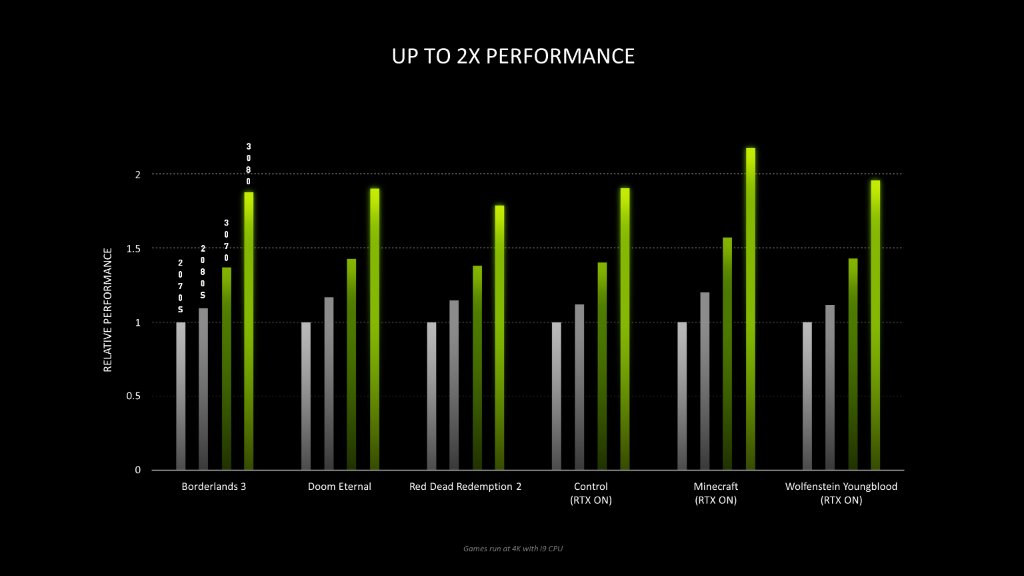Is nvidia anticipating stronger competition this time?
If you mean from AMD I'd think it's complicated. In general I feel that enthusiasts somewhat over value how important the direct AMD vs Nvidia (or Intel) product competition affects the business side, not saying there is no consideration just that there is way more to it.
This is of course all going to be idle speculation and just some ramblings but -
1) Nvidia competes more than against AMD's PC GPUs. Regardless of what AMD does the upcoming consoles need to considered.
2) Nvidia also to some extent needs to compete against themselves, as you need to convince existing users to upgrade. It's been mentioned in past that Nvidia's marketing really targets more so 2 generation upgrades. This is why I speculated they would be aggressive perf/cost wise relative to Pascal.
3) There's actually opportunity here to grow the overall market due to the Covid pandemic. The pandemic situation has actually been increasing interest in gaming as an activity in lieu of other physical options.
4) The word is the cost structure of using Samsung is much better in terms of both wafer costs and mask costs. Availability might as be better meaning a volume push is more viable. It doesn't make sense to push for volume if you can't supply it after all. In terms of FE pricing my opinion on that has always been it was done to capture more of the money going towards the sellers with initial launch availability issues. It's interesting to note that with the "refresh" releases (1080ti, Super) there was never a higher FE price.
5) Part of Turing's pricing issue was likely coming off the heels of the mining bubble.
6) Personally I've always felt that the broader opinion with respect to AMD vs Nvidia pricing is actually off. Nvidia has actually more often taken the initiative to push perf/$ forward with new releases than AMD and set the benchmarks. AMD is more reactive one. They often price lower due to market necessity which gets interpreted as AMD setting the price to keep Nvidia "honest."
7) We might also want to wait to see how the current "theory" with regards to performance actually works out in practice.

